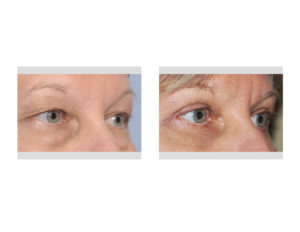Blepharoplasty remains the cornerstone of facial rejuvenation surgery. This is not only because the eyelids show the first and most visible signs of facial aging but because each patient has two sets of them. Of the two eyelids the upper eyelid is often the most frequently treated because it develops skin redundancies that are usually noticed first with hooding and a heavy eyelid appearance.

In the May 2018 issue of the journal Plastic and Recostructive Surgery an article was published ‘Refinements in Upper Blepharoplasty: The Five-Step Technique’. In this paper the senior author reviews the five key steps that he has found to be useful in most female upper blepharoplasties. These include lowering of the supratarsal fold, skin excision, lateral orbiculares window, differential skin closure, and volume restoration. The supratarsal fold is lowered by 1mm from the current crease and lowers into an orbital skin crease laterally to remove more temporal skin. The skin is excised with scissors at a point 10mms from the brow at a vertical point directly above the lateral limbus. Some orbicularis muscle is excised laterally through a lateral canthopexy can be performed if one is also doing a lower blepharoplasty. Differential skin closure is done by taking a superficial bite n the thick skin under the brow with a deeper bite from the thinner skin closer to the lash line. Volume restoration is done to the upper eyelid, if indicated, with concentrated fat injected in the submuscular plane in the upper eyelid and above the periosteum of the brow bone.
This paper provides a nice blue print for the essential maneuvers in upper blepharoplasty. As the authors point out this applies to females. Male upper blepharoplasties often do not require upper lid volume restoration.
Dr. Barry Eppley
Indianapolis Indiana


